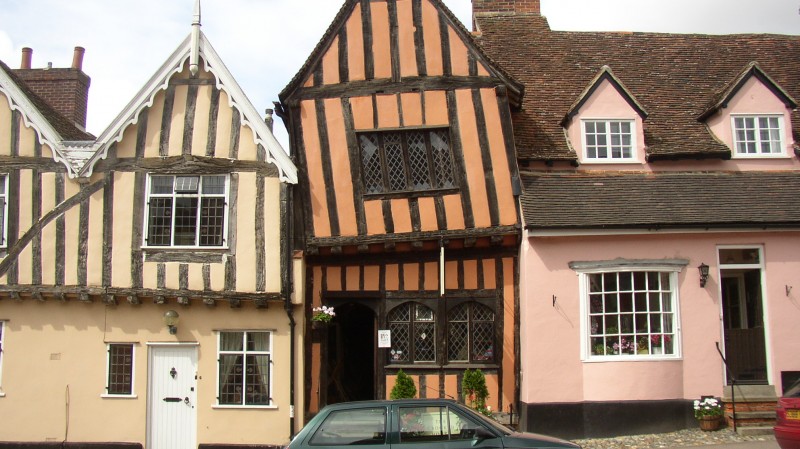You are here: Conservation Areas
What is a conservation area?
A conservation area is a neighbourhood of special architectural or historic interest “the character or appearance of which it is desirable to preserve or enhance” (Section 69 of the 1990 Planning Act, Listed Buildings and Conservation Areas). More than 9,600 have been designated in England alone since the concept was introduced under the Civic Amenities Act 1967. Typically, conservation areas are in historic cities, towns and villages, 19th century suburbs and large country estates.
Conservation areas are usually designated by the local planning authority. The aim is to preserve the distinctive character of a whole neighbourhood by preventing too much change. For example, architecture, street layout, trees and views. By contrast, the role of listed building consent is to protect individual properties. See Listed Building consent.
Applying for planning permission
Building a large extension will generally need planning permission but extending in a conservation area adds another layer of scrutiny. Home owners submit a planning application to the local authority in the usual way. But in addition to assessing the application against local plan policies, planning officers will also refer to the rules governing the conservation area. These are tailored by the local authority to protect features giving the neighbourhood its visual appeal and special character.
The other major difference is there are some minor changes home owners can make today without applying for planning permission under Permitted Development (PD) rights. However, in conservation areas they are limited so they may to need to apply for consent for those too.
Examples include:
· Side extensions and rear extensions – some of which are permitted under PD rights in other areas.
· Recladding with stone, pebble dash, timber or tiles.
· Positioning of a satellite dish on a wall, roof or chimney visible from the road
Councils can add to the type of small alterations that need permission under Article 4 Directions. For example, controlling colours of front doors. Contact your local authority to find out if a property is in a conservation area and its management plan.
Listed buildings in conservation areas need a separate application for listed building consent.

Is demolition allowed?
Usually councils will view applications from the viewpoint of wanting to keep the building, so a strong case needs to be made for demolition. In most cases, home owners will apply for demolition as part of a wider scheme, for example knocking down all or part of the house to rebuild it.
You will need planning permission to demolish a building unless it is less than 115 metres cubed, so most detached garages and outbuilding are okay without but consult your local planning authority before knocking anything down. It is a criminal offence to carry out a demolition in a conservation area without permission.
What about contemporary design?
A confident modern design could potentially enhance a conservation area. Much depends on the individual area – and council. If it has a strong design identity with one dominant style, it may be more difficult to negotiate change. But many conservation areas have a variety of different ages and styles of buildings, so there is more potential to try something different. It will require more thought but a skilful architect should be design a scheme that incorporates traditional forms and materials but in a more contemporary style. It is crucial to seek pre-application advice from the local authority.
Trees
The same rules on trees covered by a tree preservation order (TPO) apply but there is another layer of protection. You must notify your planning authority six weeks before work begins to cut down, top or trim any but the smallest of trees in a conservation area. The planning department will then consider the impact of the tree on the special character of the area and may create a TPO to protect it.
Financial benefits
Although buying a home in a conservation area means negotiating more planning controls, there are financial benefits. Homes in conservation areas sell for a premium of nine per cent on average even allowing for location and other factors, according to research by Historic England and the London School of Economics. Conservations areas are generally valued by people living and working in them for their historic character, visual appeal and distinctiveness.
Will I need expert help?
If you want to remodel or extend your home, employing an architect who is sensitive to the issues of conservation areas will greatly increase your chances of success. Planners will be looking for schemes that don’t simply try to blend in but enhance what already exists. The design will be more scrutinised. Architects are professionally trained and experienced design professionals. They should have a good working relationship with planning and conservation officers and detailed knowledge of conservation area rules. Planning applications need more depth and analysis than standard ones. For example, there will need to be a heritage assessment of the property and its setting and impact of the development. When choosing an architect, ask to see examples of buildings in conservation areas where they have won approval for major extensions and rebuilds.
If you are looking for help with a project in a Conservation Area, you may need help from some of the following experts. Clicking on the links below will instantly give you contact details for Experts in your local area:
Architectural Design Services
Find local Architectural Design experts
Historic Buildings
Find local experts
Archaeological Surveys
Find local Specialists to advise on Archaeological Surveys
Help with Planning Permission
Find Professionals who can help you apply
Builders
Find local help with a building project